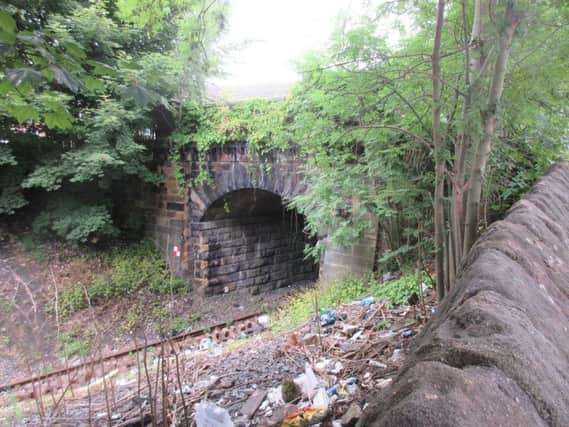Train driver killed in horrific Preston accident when wagons derailed


The Ribble Branch Railway, beset at times by tragedy due to people trespassing on the line, was the scene of another tragedy in November 1871.
This time it was an engine driver whose life would be tragically cut short. On the last Thursday of the month, shortly before 10 o’clock in the morning, about a dozen waggons were being drawn up the branch line by a LNW tank engine, driven by a 23-year-old man named Arthur Cunningham; and whilst travelling over that part where the greatest speed is necessary, the engine suddenly left the rails, which were very slippery, running along the side for about 50 yards and into some overgrowth.
Advertisement
Hide AdAdvertisement
Hide AdEventually, it swerved right round with tender foremost, and fell almost the wrong side up, about four yards from the exit of the Fishergate Hill tunnel. Five of the waggons were thrown off the line, one was pushed up to the tunnel mouth, and one was wedged in between it and the engine, and almost smashed to pieces.
The engine had its funnel knocked off and the tender was crushed up behind the fire box. As railway workers rushed to the scene they discovered the driver lying amongst the debris of the waggons. One of his legs had been severed from his body and lay on the rails and his other leg was wedged beneath the tender. Dr Bowen and Dr Howitt raced to the scene and Cunningham was eventually rushed to the hospital, where he died later in the day.
On the Thursday evening an inquest was opened at the Infirmary before coroner Miles Myres. After a brief introduction and the identification of the deceased it was adjourned until the following morning.
Amongst the witnesses was Robert Penswick, foreman of the platelayers, who deposed that the engine was running at a fast speed about 20mph with the driver preparing for the incline.
Advertisement
Hide AdAdvertisement
Hide AdHe said: “I was about 50 yards ahead of the engine under the tunnel when the accident took place. The engine ploughed up the line when it ran off, and removed two rails 21 feet long. The line had been relaid two years previous and I check it daily for any problems, and the sleepers where the engine derailed were in very good condition.”
Thomas Ainsworth was next called and he said: “I was the fireman of the engine. The deceased was driving the engine, and we had been down to the Quay and up once before, and we were on our second trip. I saw nothing on the line coming up. When the engine ran off it gave a jolt. I was thrown off the engine and received a knock on the head that rendered me insensible.
I have no idea of the cause, when we checked the engine over that morning everything seemed fine and it had been overhauled in the workshop earlier in November.”
There was some talk about the possibility of something being on the rails with boys having in recent times known to have put stones or other debris on the track. Although this was dismissed as unlikely with the line being in constant use that day and the level crossing keeper on duty.
Advertisement
Hide AdAdvertisement
Hide AdThe coroner summed up and stated that the cause of the accident would remain a mystery and he recommended to the jury that they return a verdict of ‘Misadventure’ which was returned accordingly.
Although the Preston Docks closed in October 1981 the line remained operational and from 2004 the bitumen trains to the Total Fina Elf plant have used the line. The revenue from this operation helps to keep the Ribble Steam Railway, opened in 2005, on the right track.